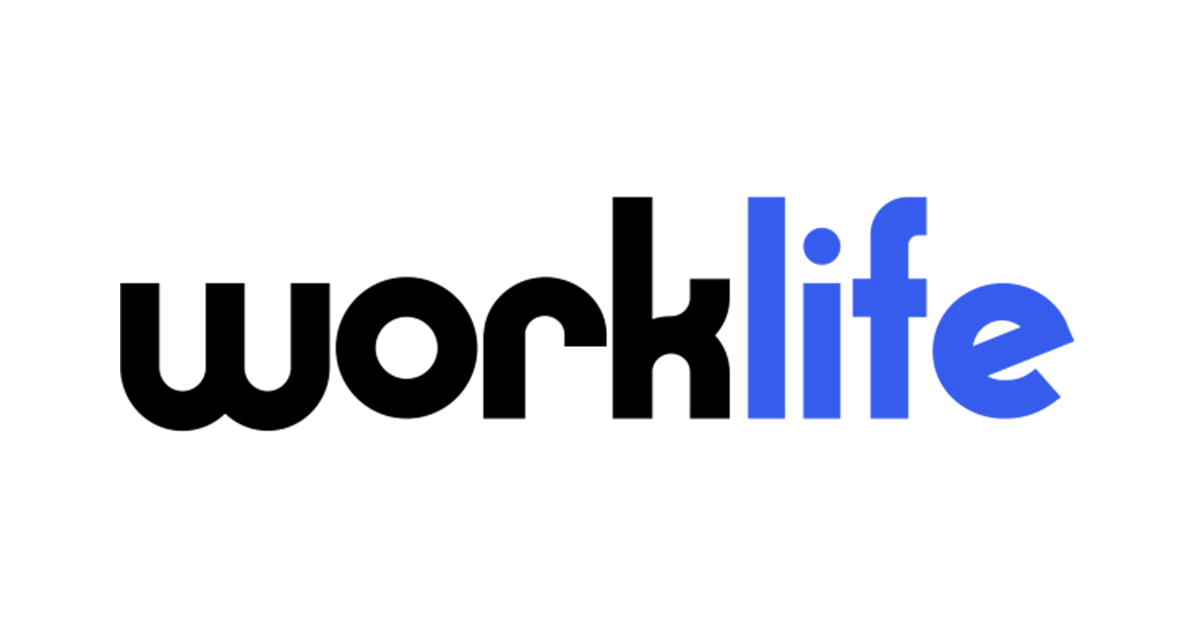It’s important for employees within any organization or in any industry to understand what their rights are, what they should and should not do in certain situations. An employee code of conduct is therefore a useful document for keeping track of pertinent information for each individual staff member to know, not only for their protection but to protect your organization from any legal issues.
What is an Employee Code of Conduct?
The employee code of conduct, often referred to as an employee handbook, is a written, formal document that outlines how employees within an organization are expected to behave. Its purpose is to establish how the values of a company dictate these behavioral expectations.
While a company code of conduct can be created by a third-party, such as an industry association, most internal employee codes of conduct are developed by the human resources department of an organization with the guidance of the employer and other management.
HR helps define the parameters of performance to ensure employee safety, productivity and engagement. The HR department is also responsible for handling employee code of conduct violations. This includes sexual harassment, discrimination and other illegal activities.
Code of conduct or code of ethics?
Often, many individuals can become confused about how an employee’s code of conduct differs from a code of ethics. They are not the same. A code of ethics is a set of standards and principles that guide the decisions and actions of an individual or company. The code of conduct defines what behaviors are acceptable for employees to engage in, whereas the code of ethics defines what behaviors are morally right. It’s important to understand that misconduct is not always unethical. While theft or fraud would be considered unethical, there are instances where an employee’s act of misconduct could be considered an ethical decision even though it was in defiance of their employer’s code of conduct, such as refusing to work due to discrimination as per DreamWorks Animation’s policies.
The Importance of a Company Code of Conduct
An employee code of conduct is important because it establishes what business conduct is acceptable and what behavior isn’t tolerated. It helps to create a culture where employees know what they can do and what they cannot do in their workplace setting.
Not only is it just good business practice, a detailed code of conduct can help prevent issues. When employees understand and maintain acceptable behavior while at work, they typically form better working relationships with their team members and avoid making the mistakes that trigger bigger problems.
A code of conduct is a proactive way to improve many areas that employee relations professionals may oversee because it brings greater clarity to the employee-employer relationship. Here are a few areas where having a published code of conduct can help:
- Promoting behavior that improves health and safety.
- Reducing legal risks such as preventable harassment cases.
- Improving engagement and building trust between management and teams.
- Preventing misunderstandings that result in termination or disciplinary action.
- Reinforcing employee voices via continuous listening and anonymous reporting.
- Scaling the business with consistent standards, irrespective of location.
Are businesses required to have a code of conduct?
While all companies should have some sort of code of conduct, most industries don’t mandate it. However, companies that want to protect their brand reputation do enforce a code of conduct, regardless of the industry, size, or number of employees. While the details for specific codes of conduct will vary from one business or industry to another, the best employer brands in the world take them seriously, including Apple, Google, Hershey, Starbucks and PepsiCo.
As a rule of thumb, leaders should create codes of conduct that are hyper relevant to the organization, employees, and clients. Because of this, a code of conduct might look strikingly like a business’s values, principles, mission, and vision since these ideals often align and even overlap.
How Is a Code of Conduct Different from Other Policies?
It’s important to establish policies, procedures, and guidelines within an organization, but they shouldn’t be conflated with a code of conduct. While a code of conduct refers to general expectations for behavior, specific policies, procedures and guidelines are much more specific. Let’s review the distinctions between each:
- Policies are formal rules that govern an organization’s leadership and legal approach to specific issues. Policies focus on one issue at a time. For example, a sexual harassment policy defines what is and is not considered sexual harassment.
- Procedures are the specific steps taken to implement a policy. A procedure provides step-by-step instructions, allowing for easy adoption and implementation. It also defines tried and tested processes that are regularly used by the organization.
- Guidelines set the tone and provide informal guidance for the organization, employees, and business units to follow for specific circumstances. As the name suggests, guidelines are not hard and fast policies or rules.
How to Write an Effective Employee Code of Conduct
The employee code of conduct is usually written by the company’s HR department. It is then given to all staff members and supervisors for them to read and acknowledge. Designed to protect the company and its employees from lawsuits, liability, and other legal matters, a code of conduct is usually divided into two parts:
- The first part defines the company’s values and principles. This includes how they want their employees to behave in the workplace.
- The second part defines what action will be taken against those who violate these principles or values. This includes disciplinary action such as dismissal or suspension from work.
Read on to discover the steps you can take to create a comprehensive code of conduct for your workplace.
1. Define your organization’s core values
What matters most to your company? The initial step in crafting a code of conduct that truly reflects your company culture is to identify and define each core value. These values form the cornerstone of your organization, guiding employees’ behavior and decision-making processes to ensure alignment with the company’s mission and vision. Clearly articulating these values fosters a unified and motivated workforce.
2. Decide who will have input in what the process will be
Identifying HR representatives to contribute to the code of conduct is crucial to create a well-rounded and thorough code of conduct. Typically, this includes HR managers, employee relations specialists and compliance officers. By involving these key stakeholders, you ensure that the code of conduct is not just a document but a living, breathing guide that reflects the complexities of your workplace. This approach guarantees that all bases are covered—from legal compliance to the nuances of daily employee interactions.
3. Review past ethical and employee issues within your organization
Identify areas where employee issues or misconduct have occurred in the past. This analysis can highlight where new policies are needed. Also, look for gaps in behavior and performance that may require attention. By understanding previous issues, you can better tailor the code of conduct to address and prevent similar problems in the future. This ensures that your policies are relevant and effective in maintaining a positive workplace environment.
4. Outline clear rules and expectations, aligning to the values of your company
Set clear guidelines for acceptable and unacceptable behavior. Make sure these guidelines align with your company’s core values to maintain consistency. Clear expectations help prevent misunderstandings and provide a solid reference point for employees, fostering a culture of accountability and integrity.
5. Set clear procedures for addressing misconduct
Define the steps and processes for handling misconduct to ensure transparency and fairness. Clearly outline the consequences for violations, including potential disciplinary actions. A structured approach reassures employees that issues will be addressed consistently and equitably.
6. Create a draft
Draft the code of conduct by compiling all gathered information into a clear and concise document. Use straightforward and accessible language to make it easy for all employees to understand and follow.
Components of a code of conduct
Most code of conduct cover many of the same topics outlined below, although this is not a comprehensive list and should be tailored to your organization’s specific needs:
- Your organization’s values, mission and vision.
- A staff directory of whom to reach out to in certain situations and their job duties. It can also include references to a government official if the need arises.
- An outline of ethical standards, ethical behavior and expected ethical conduct.
- Proper business practices – like bribery or collusion or price fixing. Anti-corruption.
- Expense and gift policies.
- A letter about inclusivity and diversity within the workplace.
- The dress code depending on different work scenarios.
- Prohibited activities that are not allowed on company property or even when working remotely, such as drug use.
- Working hours, breaks, vacation and paid time off, etc.
- Confidentiality expectations and how to protect confidential information. It will likely define what company information is included in public records.
- Policies against discrimination, harassment, retaliation and other legal issues.
- How employees are expected to use the internet and other technology.
- Social media guidelines and policies outlining what employees can post in their professional capacity versus as private individuals.
- The process for addressing breaches or possible violations of the code of conduct, including investigation procedures and potential disciplinary actions.
7. Seek feedback on the draft from key stakeholders and make updates
Get input and feedback from various stakeholders to ensure the code is comprehensive and applicable, identifying potential gaps or areas for improvement. Incorporate this feedback to refine the code of conduct before finalizing it.
8. Communicate the final to employees, and provide training and support
Once the code of conduct is finalized, share it with all employees and conduct training sessions to explain its content and importance. Provide ongoing support and resources to ensure employees understand and adhere to it, promoting and ensuring a safe work environment.
9. Continuously review and revise the code of conduct
Needs, values, laws, regulators and industry standards change over time, so your code of conduct and all other business processes and procedures need continuous updates. It should also be updated when new staff members are onboarded. Regularly reviewing and revising the code ensures it remains relevant and effective in addressing emerging challenges and aligns with the company’s evolving goals.
Best Practices of an Employee Code of Conduct
Board policy will often be where procedures for handling the employee code of conduct can and should be found, however, for many organizations this role is left up to human resources or employee relations professionals. Luckily, there are multiple best practices that have been proven effective for developing a great code of conduct while motivating employees to follow these rules.
Understand your company
Having a successful employee code of conduct that your employees can easily understand and navigate means it must be in alliance with your company’s mission, values, goals and more. If your employees can relate to and support the code of conduct because they already support the mission of your company and it’s much easier for them to understand why they’re following these rules.
Keep it concise
The employee code of conduct should be concise and specific so that everyone in the company knows what is expected of him or her. Using too much jargon can do more harm than good because it not only could become confusing to employees but using too many words also opens up the opportunity for loopholes or technicalities to be found. In the instance of misconduct, this could lead to undesired outcomes.
Communicate clearly
Your code of conduct also needs to be clearly and uniformly communicated so that everyone understands what it means. It’s important to think critically about everything that needs to be included and word it in a way that is comprehensive enough that any question that might arise is already answered.
Match your company branding
Your employee code of conduct should be aligned with any company branding so that it is recognizable and matches the voice seen across the rest of your organization.
Train employees and encourage reporting
Train employees and managers on the code of conduct to ensure understanding and make sure they know how to report any violations of the code.
An environment where employees feel comfortable reporting concerns when the code of conduct is breached makes the workplace safer for everyone. It’s best to offer multiple channels for reporting misconduct to foster a culture that supports speaking up.
Company Code of Conduct Examples
Google’s “Don’t Be Evil” Principle
Remember Google’s famous mantra, “Don’t Be Evil”? This simple yet powerful guiding principle helped Google maintain a strong reputation for ethical behavior and social responsibility. Although the phrase was retired in 2018, it still serves as a reminder for employees to act altruistically and be mindful about doing the right thing. Could your company use a similarly catchy, inspiring motto?
Starbucks’ Commitment to Diversity and Inclusion
Starbucks is all about fostering a diverse and inclusive environment. Its professional code of conduct reflects this commitment by explicitly promoting ethical principles of equality and inclusivity in the workplace. It’s code states:
“How we conduct our business and how we treat others — our fellow partners, customers, communities, suppliers and shareholders — will continue to determine how the world views Starbucks … [Our] reputation for the finest coffee in the world, legendary customer service and the highest integrity is the direct result of our collective efforts.”
How can your company show its dedication to diversity and inclusion?
Patagonia’s Dedication to Environmental Responsibility
Outdoor clothing company Patagonia is known for its strong commitment to a greener world. Their code of conduct emphasizes the importance of sustainability and environmental protection, setting the bar high for other retail businesses. With its mission to “build the best product, cause no unnecessary harm and use business to inspire and implement solutions to the environmental crisis,” Patagonia’s code of conduct encourages its employees, business partners, suppliers, community members and all stakeholders to fight against pollution and climate change.
Microsoft’s Integrity and Innovation at the Core
Microsoft, the tech giant we all know, puts integrity and innovation at the heart of its code of conduct. The company’s Standards of Business Conduct – known as the Trust Code – make it clear that being honest, fair and accountable is the way to go. Microsoft wants its employees to think outside the box and break new ground in tech, while sticking to tight ethical standards. This effective code says it all: “Our values are the enduring principles that guide us to do business with integrity as we strive to win trust every day. Our culture is our operating framework — who we are and how we behave.”
Airbnb’s Focus on Trust and Safety
Airbnb’s code of conduct highlights its dedication to building a platform that’s safe for both hosts and guests. The company promotes transparency, accountability and respect for all users, creating a welcoming and secure environment for its community. Its Open Source Code of Conduct is concise, but comprehensive, covering areas such as “demonstrating empathy and kindness toward other people and being respectful of differing opinions, viewpoints and experiences.” How could your company’s code promote a safer workplace for both employees and your customers?
Implementing and Enforcing Your Code of Conduct with HR Acuity
If your organization already has an employee code of conduct, there’s a good chance that it hasn’t been updated in a while. With technology being a large focal point for many companies, it’s easy to have a virtual version of your employee handbook that you can update and adapt easily without needing to waste resources on reprinting. Keeping your employee handbook easily accessible within a cloud-based platform will also make it simple for employees to check up on current rules and standards without having to have a physical copy at their fingertips.
If you’re asking yourself if your employee code of conduct or employee handbook needs a refresh, chances are the answer is “yes.” Don’t worry, you don’t have to go it completely alone – HR Acuity is here to help.
At HR Acuity, we understand the importance of a strong employee code of conduct. Our intuitive Speakfully platform can help streamline the process of creating, implementing and monitoring your code, while also giving employees a chance to anonymously report violations of the code. Book a demo to see Speakfully powered by HR Acuity and learn how to take your employee code of conduct to the next level!




